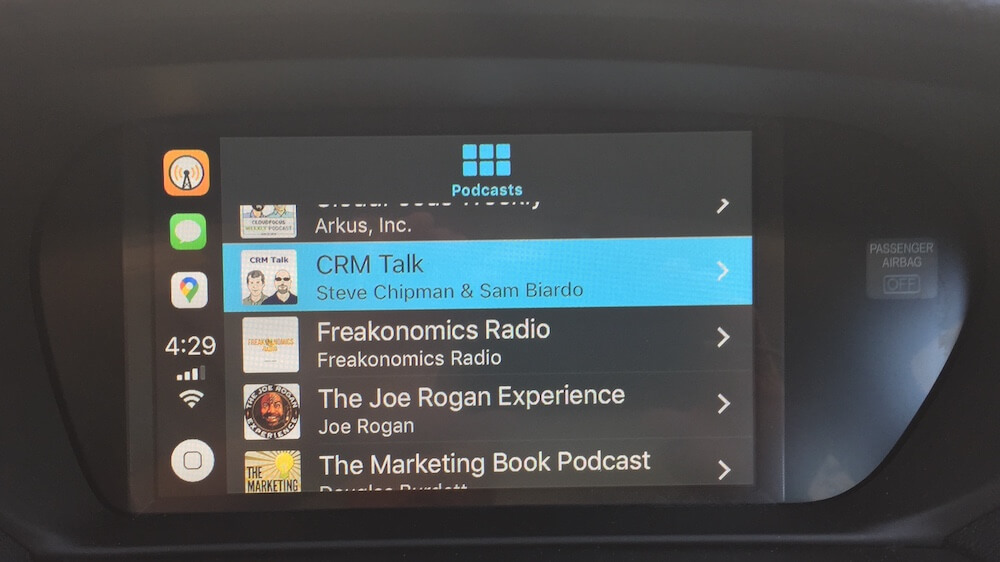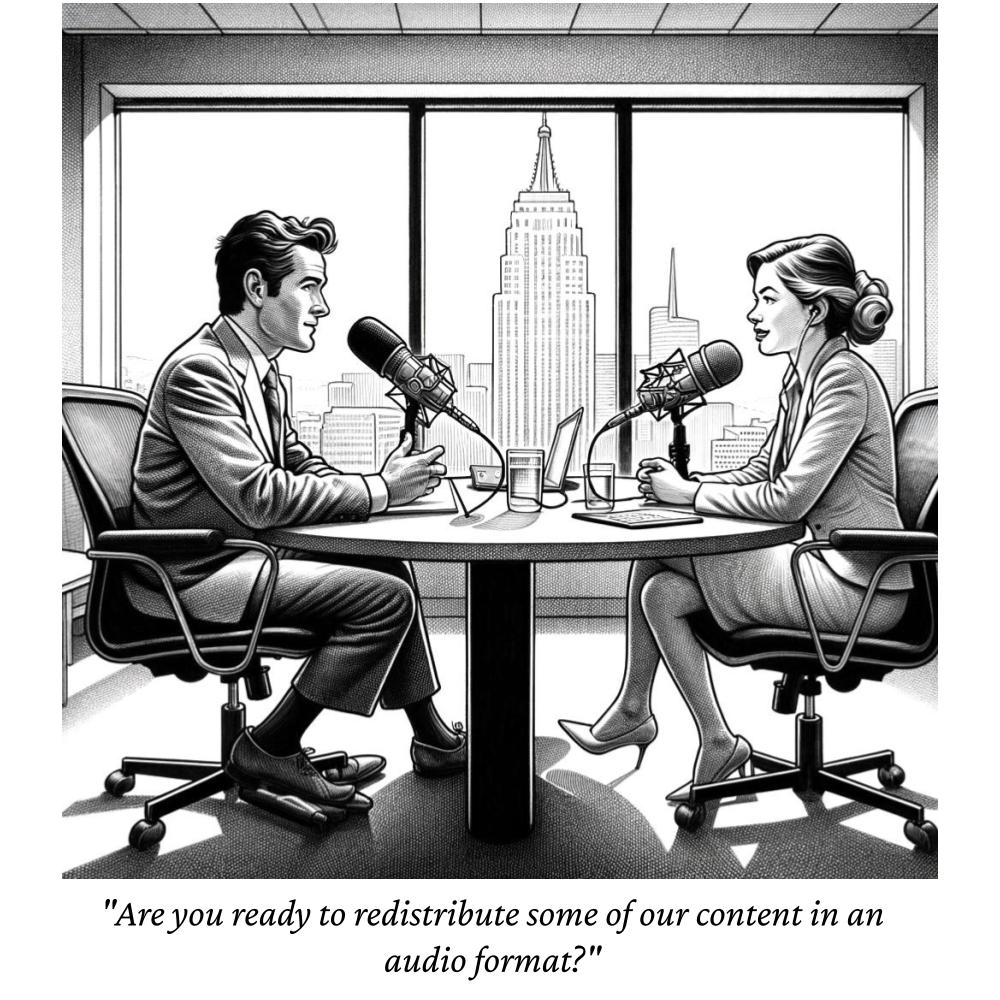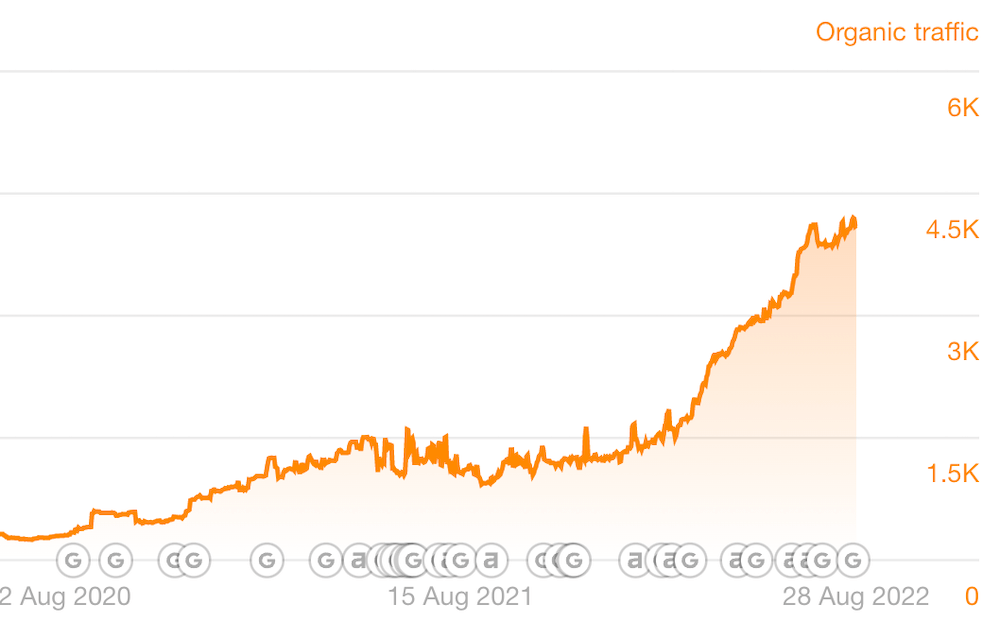Are you a marketer considering adding audio content to your marketing mix?
While there are a few caveats associated with this form of content, there are several reasons to at least test the use of audio content for marketing purposes.
Consider your reasons for creating audio content — brand awareness, demand generation, lead generation, customer engagement, all of the above, or “other?”
Neil Patel goes as far as to say that if you’re starting with content marketing, a podcast should precede a blog.
You should create a podcast, not a blog.
— Neil Patel (@neilpatel) December 8, 2023
There are more than 1 billion blogs.
There are 7.8 billion people in this world.
To put it in perspective, we have 1 blog for every 7.8 people in this world.
We don’t need that many blogs… that’s why 87.34% of the pages in our…
Can you commit to the regular schedule essential for a podcast show? Or should you test the waters with non-episodic content? We cover the differences below.
Audio Consumption Levels
According to Statista, “the percentage of the adult population the in the United States who were aware of podcasting grew from 22 percent in 2006 to 79 percent in 2022.”
Billions of people globally own a portable, streaming audio consumption device—a smartphone.
Many people now listen to spoken audio content rather than music while walking, working out, and driving.
With Apple CarPlay and Android Auto now standard with many automobile brands, the ability to listen to online audio content through car speakers is a button tap or a voice command away.

While the overall pie has grown, there are many more slices. Remember that your business content will compete with many non-business podcast show options.
The Importance of Audio Quality
Marketers can get away with average audio quality within certain types of video content.
In video content’s simplest form, you can point a smartphone at someone, record for a few minutes, and then upload the video to a service such as YouTube, Vimeo, TikTok, or Instagram.
But when sound is the only signal, audio quality is more important.
With in-ear speakers like Apple AirPods and Google Pixel Buds, content is literally inside listeners’ heads. Because of this, people are more conscious of sub-par audio-only than the audio track in a video.
With the need for quality audio, more technical steps are needed to record and produce audio-only content than video content.
Managing details like microphones, limiters, compressors, and audio software involves a learning curve.
Alternatively, you can offload technical and scheduling details using a podcast agency like Sweet Fish Media. Sweet Fish handles all the planning and logistics for B2B brands.
Pro Tip: if you want to insert third-party audio clips into your audio recordings, consider using a simple two-channel mixer with a USB out to your computer. Connect an XLR microphone to the first input channel and a smartphone or tablet with an app like OPlayer to the second input channel.
Types of Business Audio Content
Audio content can be divided into two broad areas — episodic and non-episodic.
Episodic
Episodic audio content is better known as a podcast. Like television, a show consists of episodes (and sometimes seasons).
The word “episode” implies committing to a schedule. If you launch a business podcast and then veer off course from a regular publication schedule, you will do so at the peril of losing hard-earned listeners.
Before starting a podcast, be prepared to commit to publishing a new episode weekly or monthly.
Of course, you can record several episodes in one sitting and then stagger the publication dates. However, with competing priorities, a regular commitment to recording and producing audio content can be challenging.
Podcast hosting platforms include Libsyn, Podbean, Buzzsprout, and Spreaker. Distribution networks like iTunes, YouTube, Spotify, and Stitcher pick up a show’s RSS feed.
Non-Episodic
Before committing to episodic content, you may want to test the waters with one or two recordings.
SoundCloud is a good platform for hosting non-episodic content. SoundCloud can be considered the YouTube of audio. Like YouTube, SoundCloud is its own search engine.
The SoundCloud audio player can be embedded within a website in several formats. Here’s an example:
You can also upload an audio file to WordPress. However, the audio player is no-frills:
Podcast Formats
The Monologue
One form of the podcast is the monologue, in which one person speaks continuously into a microphone for the entire episode or post (“dead air” is a killer with audio). Not everyone can pull this off. The gift of gab, deep subject matter expertise, and extensive preparation are all prerequisites.
In the business podcast realm, Michael Stelzner effectively pulls off the monologue in his Social Media Marketing podcast.
Ross Simmonds’ HubSpot Podcast Network show Create Like The Greats is a monologue-style podcast with excellent information for marketers.
Incidentally, Ross is a big proponent of content distribution. The beauty of audio content is that it can be easily distributed through several platforms, including iTunes and Spotify. You can also embed audio in a website, as above and below.
The Internal Conversation
This is the principal format that Sam Biardo and I decided on for our CRM Talk podcast. Here’s a recent episode:
This format is a dialog (and sometimes a banter) between two employees or colleagues who discuss industry topics relevant to a segment of their business audience.
Since co-hosts know or get to know one another well, this format allows for injecting entertainment into the dialog to counteract the dryness afflicting some business audio content.
The Interview
Another podcast form is an interview with someone outside your organization, such as an industry thought leader. Interviews can make excellent content.
However, this format does require a fair amount of effort, as booking guests is time-consuming. Being an effective interviewer involves practice. The more interviews you do, the better you’ll get.
One of our favorite interview format podcasts is The Marketing Book Podcast.
How to Record Yourself and Others
When recording, it’s best to have separate audio tracks for each person. This makes it much easier to remove background noise and excessive fillers (‘um,’ ‘uh,’ ‘right,’ and ‘you know’) from one person’s track. Plus, you can ensure everyone’s voice is at the same volume.
For recording people in multiple locations, we used an online meeting app, a mixer, and a digital audio recorder to do our recordings.
We’ve since switched to using Zencastr for podcast episode recording. Zencastr allows for an optional video track.
We use Adobe Audition to produce podcast episodes, although Zencastr has built-in production tools. Adobe Audition gives us more control.
There’s an AI for this: Podcastle declares it’s “The easiest way to create podcasts. No technical skills needed.”
Calls to Action in Audio Content
Calls to action in text content, such as the one at the bottom of this blog post, are typically image-based and designed to be clicked or tapped.
Audio calls to action aren’t as real-time. Those who consume audio content on their mobile device are not generally able to immediately follow through on verbal calls to action.
They may be driving, walking the dog, hiking, or on an exercise machine. So, what are some practical approaches to audio CTAs?
Verbal CTAs should be brief, relevant to the listener, and memorable. Here are some approaches used in business audio content.
- Include a short intro to your products or services at the beginning of the episode
- Mention your website’s URL and what your website is about during the episode
- Promote an upcoming event at least once during the episode
- Discuss a recent blog post you wrote and verbally expand on the content
- Subtly mention a product or service that your company offers by referring to it during the ebb and flow of the dialog
Since content is communicated differently via audio than other formats, calls to action must take on specialized forms.
It won’t be easy to directly monetize your podcast through ads unless you develop a significant-sized audience (tens of thousands of listeners), which will take time.
When considering whether to test audio as part of your content marketing mix, consider the increasing number of people who have become aware of the medium and spend more time consuming audio content.


